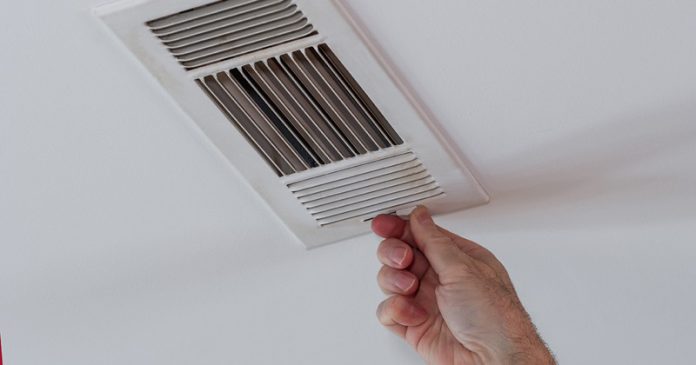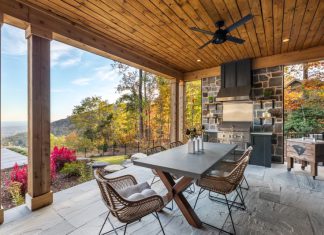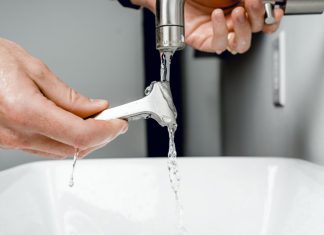Air duct problems are the most common HVAC problems homeowners and landlords face. Just like other appliances that you use at home, your heating, ventilation, and air conditioning (HVAC) systems also run into problems after some time. Visit Terra Bloom for the perfect Air Duct Fans for your Hvac Problems
It is essential to keep your family safe from the elements and ensure that you are not wasting electricity and money. You should be aware of the most common reasons for air duct problems so that you know when something needs to be addressed.
Here are some of the most common reasons for air duct problems:
Air Duct Leaks
One of the biggest problems air ducts might have is leaking. No one wants air leaking out of their air ducts unnecessarily. It’s a massive waste of energy, and it can cause your bills to go up, causing you to pay more than what you have to.
The good news is that there’s not much you can do about this beyond finding the leak and sealing it with professional-grade foil tape. It’s better to call a professional who has the right tools and experience to seal the leak properly.
Mold in Your Air Ducts
Your air conditioning system is one of those things you hope will always function properly. Yet, until anything goes wrong, it’s likely that you don’t think about it very often.
If you notice black spots on the vents in your home or offices, mold could be present. Unfortunately, this can be a health hazard for those with breathing-related issues like allergies or asthma.
Dirty Air Filters
Your air filter is designed to trap dust and debris that can get caught up in the air conditioning system. If left unchecked, they may cause the unit to malfunction or become damaged over time.
If you have dirty air filters, it will be difficult for air to flow through the system properly. This can cause air circulation problems in your home and lead to warmer temperatures overall. Change out your filters regularly to prevent this from happening.
Clogged Ducts
The first and most significant indication of a clogged air duct is that your HVAC system won’t be able to heat or cool your home as well. As a result, you may notice that the temperature in your home is uneven.
For example, the rooms far away from the furnace tend to be colder than those closer to it, even when the thermostat is set to a consistent temperature.
Clogged ducts will also lead to poor air quality since dust and bacteria will grow inside them. This can become a significant health hazard for those who suffer from allergies or asthma.
Homeowners who have pets also often find that their ducts become clogged with hair and other debris over time. Regular cleaning will be required to ensure that this doesn’t happen, which means you need to clean up your pets regularly if you have pets in your home.
Damaged or Improperly Installed Registers and Grilles
Damaged or wrongly installed registers and grilles in air ducts can cause drafts and energy loss. That’s why they shouldn’t be obstructed by furniture, carpeting, or drapes.
These components of your HVAC system need to be correctly installed to function optimally and protect against contamination. The airflow can be compromised or even entirely blocked if they’re not installed correctly.
Aside from that, the air registers should be checked periodically to verify their secure installation and proper operation. All registers should open freely, and there must be no noticeable obstructions to the free flow of air into the room.
Most registers have some damper control attached to their frame to control the amount of air flowing into the room.
In this case, the damper is a movable plate that opens and closes an air passage. When open, it allows air to enter through the register; when closed, it blocks airflow through the register.
Poor Design
Poorly designed ducts can cause poor air circulation, uneven heating and cooling, and higher energy bills. Some of these issues may not be easy to detect, but others can cause discomfort and health concerns for your family.
A suitable ventilation duct transports air or gas with minimum resistance. In a ventilation duct, the primary resistance to airflow occurs due to friction between the air and the duct surface.
The smaller the duct’s diameter, the larger its surface, and hence the greater the friction. The pressure loss can also be reduced by avoiding bends in the duct, where friction loss is high.
If you’re building a new home, it’s best to hire a qualified HVAC contractor to design and install your duct system with attention to detail and precision.
The size and shape of each duct must be carefully calculated, taking into account the size of the blower in your furnace or air conditioner and the length of each run from the furnace to each room.
Improper Insulation
Improper insulation in air ducts can cause you to use more energy than necessary. The insulation for your air ducts is typically located in an attic, basement, or crawl space.
It’s installed around the ducts to regulate the temperature of the air being delivered to different rooms throughout your house. Because ductwork passes through unconditioned spaces, insulation is necessary so that the air temperature is not affected by outside air.
If you have areas of your ducts that are not adequately insulated, you may be losing energy, resulting in higher utility bills and ultimately costing you money.
Conclusion
With that said, if you’re thinking about replacing your air ducts because you believe they’re old and falling apart, it’s better if you think again.
Older, existing air ducts are still just fine. It all boils down to a few key things: the materials and quality of construction, the age of the home, where it is located and how energy efficient the house is, insulation in the attic and crawl space, whether you have pets or severe allergies, and how the duct manufacturer/installer does air sealing work.
Rather than buying a new air duct because of the above problems, consider searching for home vent cleaning services from reputable companies such as Direct Air.













